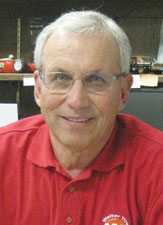Winter Driving
The onset of winter weather ultimately brings with it dangerous road conditions, which is nothing new to us here in Nebraska. However, it doesn’t hurt to review what we can do to prepare for road conditions that lie ahead of us for the next few months.
First and foremost, ensuring that all required maintenance is done is a major part of staying safe on the road during the winter months. Sherri Stock of inMOTION Auto Care (www.inmotionautocare.com) offers 5 Steps to Get Your Car Ready for Winter:
1. Change Engine Oil – Going into winter with a clean filter and fresh oil will help your engine start better and help reduce internal component wear in the engine during longer warm-up periods. Our oil change service includes a free 82-point inspection that will cover all of the items below.
2. Battery Test & Inspection – A weak battery may get you through the mild fall weather but could leave you stranded once temperatures start to plunge. Extra amps are needed to crank over a cold engine in cold weather. Any corrosion buildup on the terminals allows a voltage drain on the battery, making it even harder to start.
3. Tire Inspection – Your tires are the only thing between you and the road. Low tire tread (4/32” or less) will have a difficult time getting traction in the snow and slush. Tires with insufficient tread may also hydroplane on wet roads. Good tires are essential to safe winter driving!
4. Check Engine Coolant – Coolant should be checked for freeze point and mix ratio as well as for cleanliness and contaminants. If the coolant should fail any part of the inspection, it should be serviced. Coolant should be replaced every 5 years to prevent corrosion of internal components due to acidity.
5. Check Wiper Blades – 95% of driving decisions are based on what you see. Replacing worn wiper blades is an inexpensive way to ensure good vision! REMINDER: Washer solvent can freeze, so make sure you’re using a winter blend.
When it comes to safe driving, visibility is indeed a major factor and should be taken seriously. There are a couple of key factors to take into account specifically during the winter, and doing so will ensure that you are good to go no matter what the weather conditions may throw our way.
“Headlight restoration is an even more important consideration during the winter months since the days are shorter and we spend more time driving in the dark,” advises Boyd Baillie, owner of SuperGlass Windshield Repair of Nebraska (www.superglassnebraska.com) . “The need for clear, bright headlights is essential for safety. The modern headlight lens is made of acrylic. A weakness of acrylic is its tendency to break down and deteriorate due to contact with cleaning solvents and exposure to UV rays, causing the headlight to be dimmer and less effective. The SuperGlass Headlight Restoration system removes the opaque and yellowed surface of the acrylic and restores clarity of your headlights to like-new condition.
Also, if you get a rock chip in your windshield, don’t put off getting it repaired. The cold weather may make it more likely that it will crack out and you’ll end up having to replace the windshield, something that could end up being quite costly. Not only does repairing a windshield costs a fraction of replacement, but many insurance companies will waive your deductible and pay for the repair directly.”
As previously mentioned, your tires are the key to your safety when driving in the inclement weather that we are accustomed to here in Nebraska during the winter.
“I always caution folks to not be fooled by the ‘All Season’ tire designation, especially this time of year,” advises Nick Vuko, owner of Walker Tire and Quick Nick’s Service Centers (walkertirequicknicks.com). “With a name like that it’s easy to have a false sense of security that it means you’ll be safe in all conditions, but that’s not the case. All Season tires are not designed for ice, snow and slush. Instead, we highly recommend All Weather tires such as those made by Nokian, a company that is well-known worldwide for engineering tires that are the safest in inclement weather. There are still a lot of people who have a preset idea and are sold on the concept and hesitant to change their position on it. However, I urge you to stop in and ask us questions before you absolutely make up your mind. The major safety issue with All Season tires is that stopping and turning are both a problem. With All Weather Nokian tires, you can go wherever you want and do whatever you need to do no matter what Mother Nature throws your way. Stop into any of our stores and we’ll show you exactly what we’re talking about – Nokian tires truly are the safest application of any tire we’ve ever sold in our 64 years in business.”
With inclement weather comes a rise in accidents, so we are all unfortunately at a much higher risk for being involved in a collision. This is definitely not something that’s dealt with on a regular basis, so it’s common to not know what steps to follow or furthermore, what’s most beneficial, if you find yourself in that type of situation. As such, being prepared for that exact scenario is a good idea.
“Most of the time when people get into an accident it is a very stressful event,” says Matt Moorhead, a local agent with Shelter Insurance (www.shelterinsurance.com) . “It is a total inconvenience for everyone involved and it’s common to be in shock. The easiest way to gather information in an accident is to use your cell phone. Take pictures of the vehicles involved and how they are sitting after the accident. Then, take a picture of the other person’s driver’s license, insurance card, and registration for the car they are driving. If there are any witnesses, make a note of their name and number to put on the accident report. Finally, get a contact number to get a hold of both the driver and the owner of the car. Of course then call your agent with the information you have complied and he/she will take it from there.”
“Always have your agent’s name and direct reporting number on-hand,” agrees David Duff, a local Farm Bureau Financial Services agent (www.fbfs.com) . “This is helpful if you have any immediate questions so that nothing important will get overlooked. Another way to keep this information handy, especially for teenage drivers, is to carry a ‘What To Do’ list in the glove box. Furthermore, it never hurts to have extra winter gear such as gloves, hats, and blankets along with emergency items such as a flashlight, candles and matches, jumper cables or a first aid kit. If you are in an accident in a remote location or your car breaks down staying safe and warm is important. Remember, you are not the only one on the road and that is why a review with your auto insurance agent is always important. You’ll not only know more about your coverage but it’s a great opportunity to adjust it if needed. A review this time of year, even if it is just a quick brush up on your policy, never hurts.”
“The coverages you choose to carry on your policy can be critical and a good relationship with your agent is very important,” adds Moorhead. “Many times people are looking for the best deal and forget that the lowest priced policy may not include all of the coverages that they may need in case of an accident. While you can go online and purchase insurance without even talking to an actual person these days, a simple and oftentimes brief discussion with an agent about your vehicle use, needs and concerns could make all the difference.”
Car accidents can be emotionally, financially, and physically challenging experiences. If you’ve been in a car accident, it’s likely that you’re dealing with some kind of injury as a result. Many times, a person who has been in a car accident may not even have pain until a few days or weeks after the accident. This is because the spike in the hormone adrenaline which occurs during trauma has a numbing effect on pain, and it can take some time before the adrenaline subsides.
“A chiropractor assesses, treats, and heals the human body after injury by using natural and drug-free treatments and methods,” explains Dr. Austin Weaver of Holmes Lake Chiropractic Group. “Chiropractors can also prevent chronic issues from developing. This is why receiving chiropractic care as soon as possible after a car accident is crucial. Here are 5 specific things a chiropractor can do to help manage your car accident injury – 1. Resolve pain; 2. Heal injured tissues; 3. Treat and resolve post-accident symptoms; 4. Restore your body’s natural alignment and motion; and 5. Modify workplace environments to improve your body mechanics and reduce pain, stiffness, and dysfunction. The body has a predictable response that happens when there is tissue injury. The reason for the order of response is to promote the best recovery and healing to the injured area. Acute inflammatory phase, repair phase, and remodeling phase are the 3 responses and the longer an injury goes without treatment the more likely long term chronic issues will occur. The acute inflammatory phase lasts for 72 hours and is the most important time to be seen to allow for a quicker and better recovery. If you’ve been in an accident contact us today at Holmes Lake Chiropractic, (402) 483-4409 or at HolmesLake.com.”
There’s certainly no avoiding winter weather, as we all have places to be and things to do, but there are many ways that we can set ourselves up for success in safely navigating through all types of conditions or in the event of an accident. If you’re ever in doubt, ask a local professional – they are only a phone call or a quick stop away, and that could be the one that makes all the difference. Stay safe out there everyone!







